10, 2023
by Oree Laser
Arc Welding vs. Laser Welding: What’s the Difference?
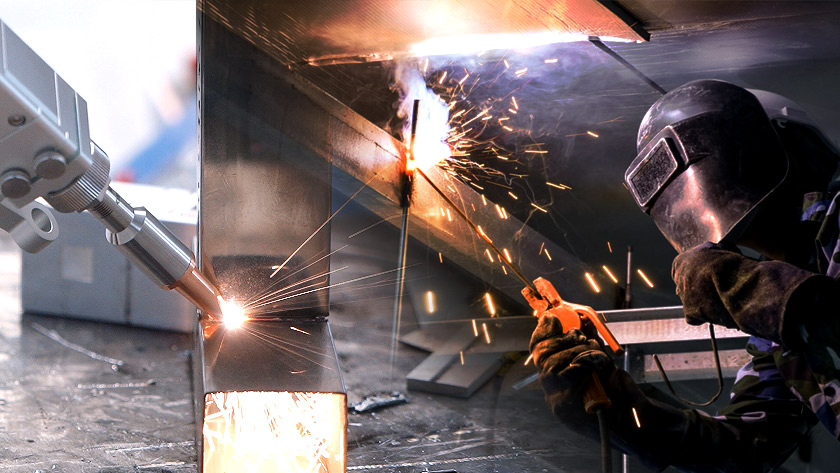
Welding is one of the most widely used joining processes in manufacturing, Arc welding and laser welding are two popular welding processes used to combine metal components in a variety of industries. Although both procedures produce strong and long-lasting welds, they differ dramatically in key ways. This article provides a comparative introduction to arc welding versus laser welding.
Arc welding is a metal-fusing method that uses an electric arc to fuse metals together. This procedure involves the application of a continuous electrical discharge, known as an arc, that spans the space between an electrode (either a consumable metal rod or a non-consumable one) and the workpiece. The extreme heat produced by the arc melts the metals, resulting in the production of a weld pool made up of material from both components. As the pool cools and hardens, it forms a solid and durable joint.
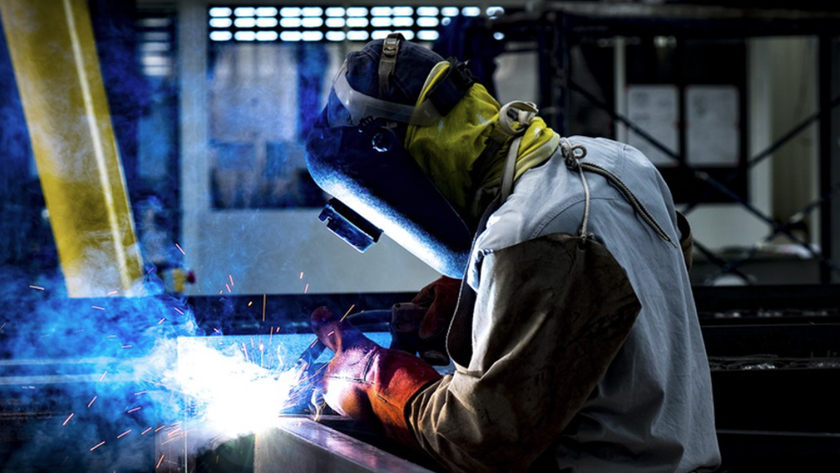
Arc welding is one of the most often used welding processes in the manufacturing industry. Its importance arises from its versatility, durability, and efficacy across a wide range of materials and thicknesses. It can be used on a variety of metals, including steel, stainless steel, aluminum, and copper, allowing manufacturers to meet a wide range of needs. Arc welding ensures the structural integrity and durability of manufactured objects by providing strong and long-lasting welds. Furthermore, it is a cost-effective choice because the essential equipment and consumables are affordable.
Arc welding provides numerous benefits that contribute to its widespread use across various industries. Here are some key advantages:
Arc welding is suited for outdoor applications, even under adverse weather conditions. The gas or flux shielding protects the welds from air pollution, maintaining their integrity.
The portability of arc welding equipment allows operators to be flexible and work in a variety of places.
Because arcs can be formed in any orientation, welders can work in flat, horizontal, vertical, and overhead positions as needed.
Arc welding can be used to join thicker pieces of metal together. adaptable and compatible with a variety of metals and alloys, including steel, stainless steel, aluminum, copper, and others.
Arc welding is often less expensive than laser welding and can be used to weld larger areas at once.
Arc welding, like all other welding processes, has limitations and drawbacks. Consider the following points:
Difficulties with thin materials: Arc welding can be difficult with thin materials. The intense heat generated by the arc can induce deformation, warping, or burn-through of the underlying metal, making precise and clean welds difficult.
Skill and training requirements: To ensure proper execution, arc welding operators must have the requisite skills and training. Weld quality and efficiency may be jeopardized without sufficient training.
Slag and splatter: During the welding process, arc welding procedures frequently produce slag or spatter. Additional cleanup and post-weld polishing are required to get the desired appearance and smoothness of the weld.
Safety risks: The arc welding process produces strong heat, brilliant light, and potentially toxic gases. To reduce health concerns, welders must take necessary safety procedures, such as wearing protective gear and maintaining optimum ventilation.
Power supply reliance: Arc welding relies on a dependable and steady power source to maintain a stable arc. Any fluctuations or interruptions in the power source can have an impact on the weld's quality and integrity.
Longer welding time: Arc welding often takes longer than other welding technologies, such as laser welding. Filler material deposition is slower, and many passes may be necessary to accomplish complete joint penetration on thicker workpieces.
Arc welding is widely used in a variety of industries, including construction, oil & gas, and automotive. Arc welding is commonly used in the following applications:
In shipbuilding operations, connecting steel plates, sections, and other structural parts.
Using metal resources to create artistic and sculptural creations.
Metal component, machinery, and equipment repair.
Assembling metal components to create body panels, chassis frames, exhaust systems, and other items.
Creating metal structures for buildings and infrastructure projects such as gates, fences, railings, and frames.
Arc welding is based on the arc discharge phenomenon, which occurs when an electric current passes through a gas, producing extreme heat and a dazzling light. When the voltage between two electrodes exceeds a specific limit, the gas can no longer function as a full insulator, and current flows across the gap, generating an electric arc. This arc generates a lot of heat and emits a distinctive arc-shaped light. Welders use this arc as their major heat source while welding.
The electrode, which is normally in the shape of a welding rod or wire, is linked to the positive terminal during arc welding, while the base material is attached to the negative terminal. The arrangement makes it easier to build the arc between the two.
Arc welding commonly uses output currents ranging from 5 to 1,000 Amperes and output voltages ranging from 8 to 40 Volts. The temperature of the arc itself can reach 5,000-20,000 °C, far beyond the melting temperature of iron, which is around 1,500 °C. As a result, the high-temperature arc melts the base materials (and, in certain situations, the electrode) during the welding process, forcing them to fuse together.
Laser welding, also known as laser beam welding (LBW), is a method of joining numerous things together that uses a highly focused beam of laser light. A laser resonator is employed in this procedure to generate a concentrated laser beam via stimulated emission. Mirrors or fiber optics are used to direct the laser beam to the weld joint.
The immense heat generated by the laser beam during laser welding melts the material in the region of the weld joint, forming a molten pool. The molten material solidifies as the laser beam travels away, providing a strong and precise weld bond.
Laser welding uses two major techniques: conduction welding and keyhole welding. The power density provided to the welding zone varies across these procedures. Lower power densities are used in conduction welding, whereas higher power densities are used in keyhole welding to produce a vapor-filled cavity, or keyhole, in the material.
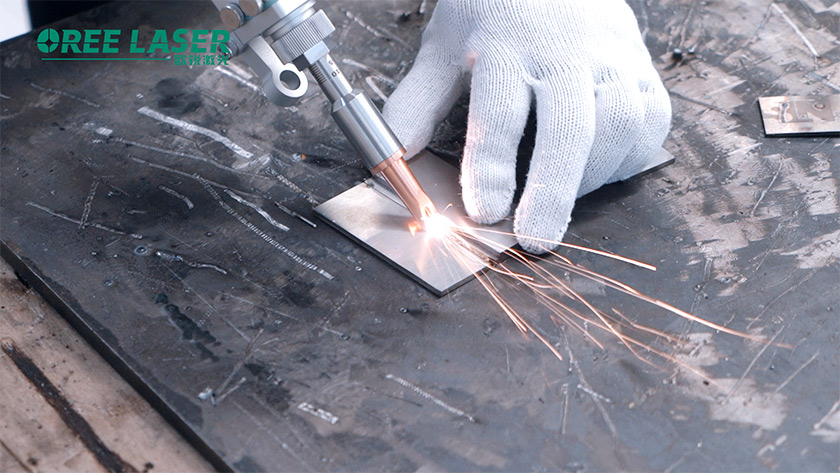
Because of its considerable advantages over traditional welding procedures, laser welding is becoming increasingly important in the manufacturing business. Its excellent ability to precisely control heat input allows for the construction of highly accurate welds, making it especially useful in areas such as electronics, medical devices, and aerospace. Furthermore, laser welders work at high rates, resulting in increased productivity and efficiency in production processes. Another significant advantage of laser welding is its ability to combine different materials such as plastics, ceramics, and various metals. This adaptability broadens the number of applications for which laser welding can be used, emphasizing its relevance in the manufacturing industry.
Laser welding is a versatile welding technique that has applications in a variety of sectors. Its ability to weld dissimilar materials and precision control over heat input make it appropriate for a wide range of applications. Some common applications for laser welding include:
Laser welding is used in the aerospace industry to attach essential aircraft components such as turbine blades, fuel tanks, and structural sections. Laser welds are useful for aerospace applications due to their great precision and strength.
Laser welding is used in the automotive industry to combine components like as body panels, chassis parts, exhaust systems, and engine components. It creates strong, dependable welds while reducing deformation and heat-affected zones.
Laser welding is widely used in the electronics sector to attach sensitive electronic components such as connectors, sensors, and microcircuits. The non-contact feature of laser welding ensures that delicate electronic parts are neither damaged or distorted.
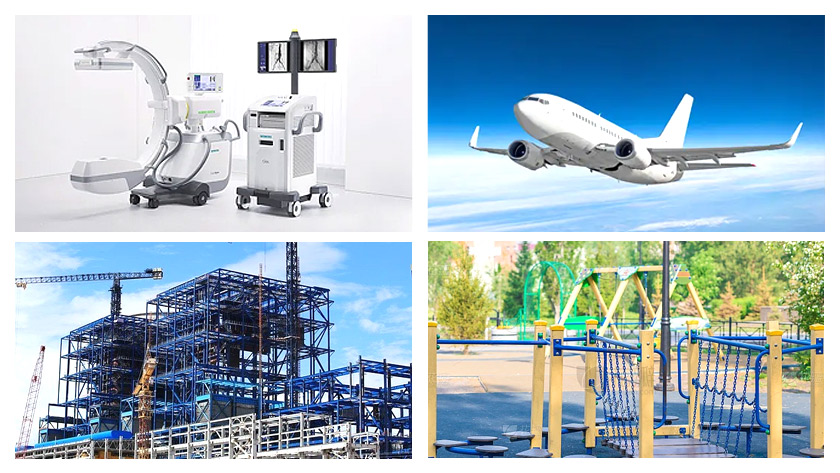
A high-energy laser beam is directed onto the joint where two components meet to perform laser welding. The laser beam's extreme heat melts the material at the joint, causing it to fuse together as it cools and solidifies.
Robotic systems are often used in industrial settings to perform laser welding. These robots can precisely adjust the power and speed of the laser beam, allowing for precise and efficient welding. Flexible optical fibers direct the robots, allowing them to access difficult-to-reach regions and create welds with little distortion.
Overall, laser welding offers precise control, fast welding speeds, and material diversity. Its uses span from the automotive and aerospace industries to the manufacture of electronics and medical devices.
Laser welding offers several advantages compared to traditional welding methods. Here are some key advantages of laser welding:
Due to the focused laser beam, laser welding provides remarkable control over heat input. This precision reduces distortion and allows for precise weld placement.
The laser beam's concentrated energy allows for quick heating and cooling, resulting in shorter cycle duration and higher overall efficiency.
Laser welding is adaptable and may be used on a variety of materials ranging from thin foils to thicker plates. It can also produce narrow and deep welds, allowing it to meet a variety of welding requirements.
A laser's localized heating produces a narrow heat-affected zone, lowering the possibility of thermal distortion and causing damage to neighboring materials. The mechanical qualities of the underlying material are preserved, resulting in stronger and more reliable welds.
Laser welds do not require an electrode and are frequently made without filler materials, which reduces overhead and simplifies logistics. Laser welding is thus a cost-effective and efficient welding method.
Laser welding is a non-contact procedure, which means that no physical touch is made between the welding instrument and the workpiece. This reduces the possibility of contamination and damage, resulting in cleaner, higher-quality welds.
Laser welding lends itself nicely to automation and integration into production lines. Laser welders are simple to integrate into robotic systems, allowing for fast and consistent welds.
Lasers provide aesthetically beautiful welds with low surface flaws, making them ideal for applications requiring a clean appearance, such as in electronics.
The laser source, which produces a high-intensity laser beam, is the most important piece of equipment in laser welding. Using optics, the laser beam is then guided and focussed on the workpiece. A robotic arm or a specialised workpiece positioning system is usually used to position the workpiece. A shielding gas system is also utilized to protect the weld region from oxidation or contamination. The entire process is managed by a control system, which adjusts the laser power, beam intensity, and other parameters.
The most important component of equipment in arc welding is the power source, which creates an electric arc between the electrode and the workpiece. The electrode holder secures the electrode and provides it with the required current. To protect the weld area from air pollution, a shielding gas system is utilized. A control system, similar to laser welding, is used to govern welding parameters such as current, voltage, and arc length.
In general, laser welding equipment is more complex and specialized than arc welding equipment. Laser welding necessitates the use of a high-power laser source as well as accurate optics to create and focus the laser beam. Arc welding, on the other hand, is based on an electric arc generated by the power supply.
The cost comparison of laser welding with arc welding is subjective and dependent on a variety of parameters. While laser welders are more expensive up front than standard arc welders, they save money in the long run. Laser welding is a speedier procedure, which increases production while potentially lowering labor expenses. Furthermore, the precision of laser welds frequently avoids the need for substantial post-processing, saving time and money. Furthermore, laser welding often does not require extra consumables such as electrodes or fillers, which contributes to long-term cost reductions. Finally, the cost-effectiveness of laser welding versus arc welding will vary depending on the application and long-term operational concerns.
Yes, laser welding is considered to be just as strong as, if not stronger than, arc welding. In many circumstances, laser welds outperform arc welds in terms of strength. Laser welding is also substantially faster than arc welding, with welding speeds often three to ten times faster. Laser welding can join thick joints effectively and without the need for several passes or excessive heat, which might potentially affect the strength of the welded materials. Furthermore, laser techniques are ideal for combining thin metal components without creating damage or distortion, whereas arc welding frequently causes severe deformation. Overall, laser welding produces strong, efficient, and precise welds, making it a popular choice in many applications.
When compared to laser welding, arc welding technologies such as shielded metal arc welding (SMAW) or gas metal arc welding (GMAW) have slower welding speeds. The rate of material deposition in arc welding is affected by variables such as electrode diameter, welding current, and travel speed, all of which contribute to a slower overall process.
Laser welding, on the other hand, is well known for its extraordinary speed. With its high power density, the concentrated laser beam rapidly warms the material, resulting in fast travel speeds and effective welding. When compared to typical arc welding technologies, hybrid welding, which combines an electric arc with a laser beam, also provides comparatively fast welding speeds.
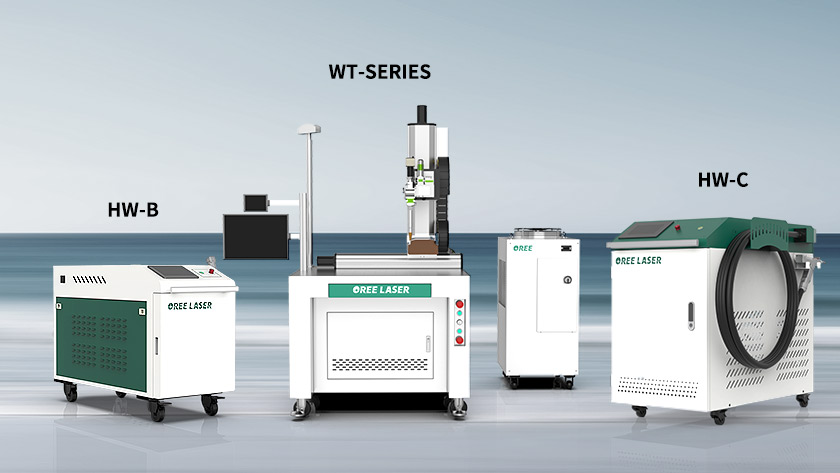
The article reviewed the distinctions between arc welding and laser welding, explained each technology, and looked at their various uses. If you want to discover how to choose the best laser welding machine for your needs, read the article "How to Choose the Most Satisfactory Laser Welder?"